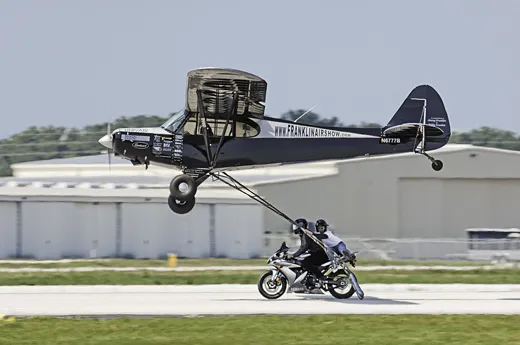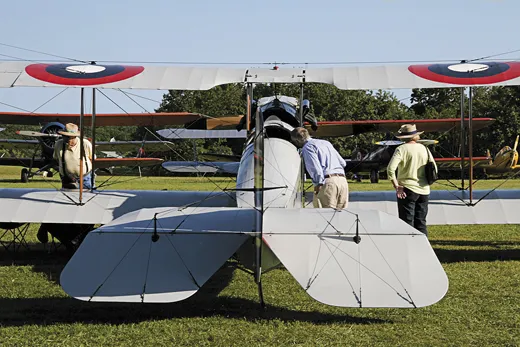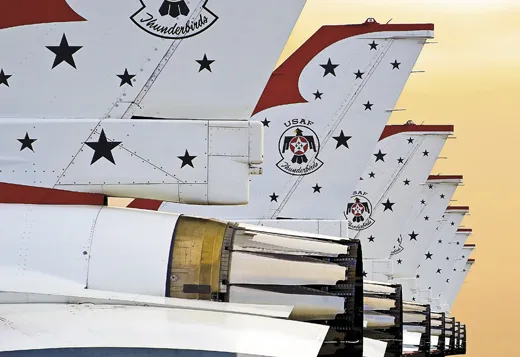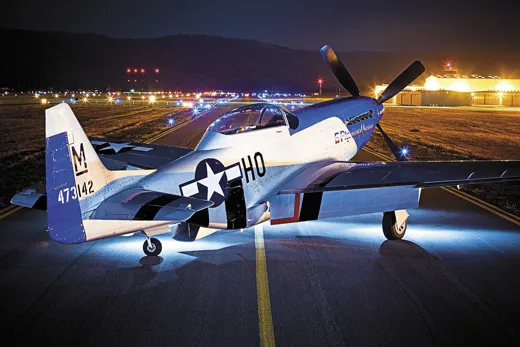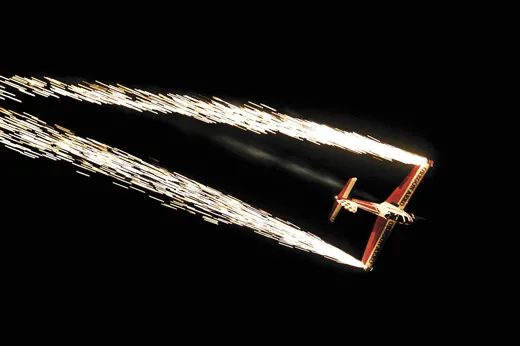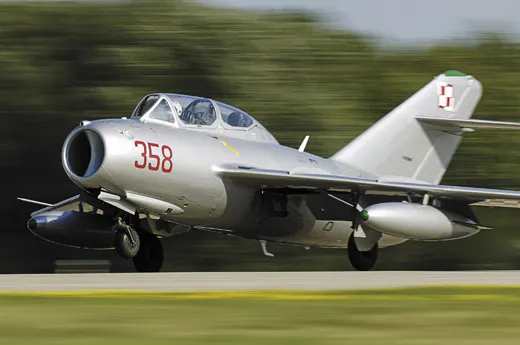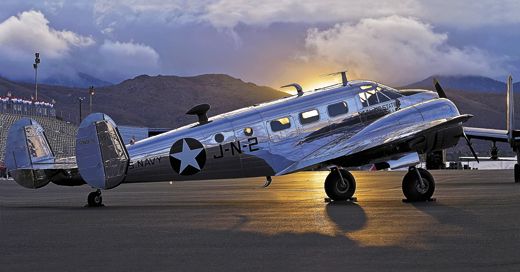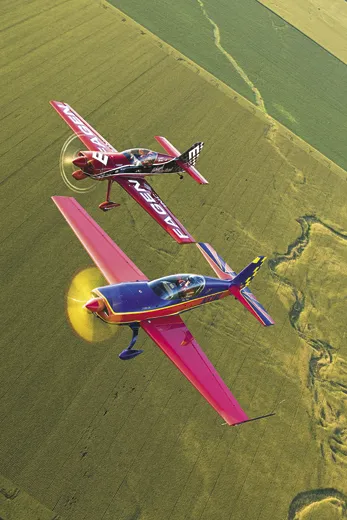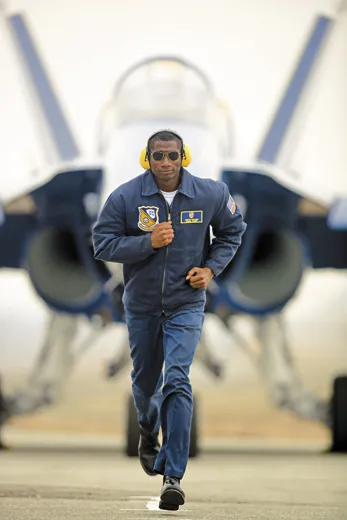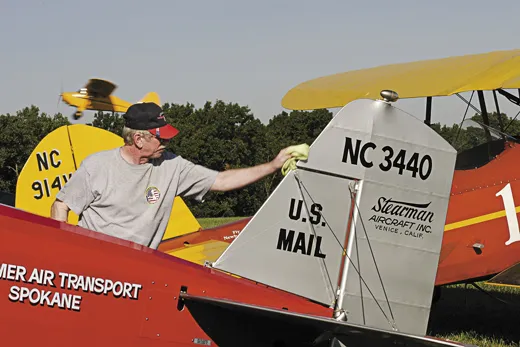Hit Me WIth Your Best Shot
Our photo editor offers 12 tips to make your airshow album a work of art.
/https://tf-cmsv2-smithsonianmag-media.s3.amazonaws.com/filer/Plane_P38_Pros_Flash_AM09.jpg)
You don't need a lens as long as your arm to get memorable — and artistic — shots at an airshow. The five professionals whose photographs appear on these pages will tell you that all the equipment in the world won't deliver wonderful pictures if you don't have patience, imagination, and a good eye. What may help are a few trade secrets. As the Air & Space photo editor, I've looked at thousands of airshow pictures — and shot a few myself — and the ones that always stand out are shot by photographers who have fresh ideas and don't settle for the tried and true.
1. Anticipate. Learn the performers' routines, listen to the announcer, and be ready to trip the shutter at the right moment, as Richard VanderMeulen was when he froze the MiG-17 (above) just as the nosewheel left the ground, and caught stuntman Andy Roso (right) just as he grabbed the ladder to climb into the Super Cub. Check out the speed that VanderMeulen evokes by panning his camera with the MiG. Want to try it? 2. Set a slow shutter speed and follow the aircraft. The result: a photo of fast—the airplane in focus, the background blurred. But for pure drama (opposite), wait for spectacular nighttime aerobatics.
3. The chance for air-to-air is rare, but an offer to buy the gas can sometimes earn a ride. If you do get the opportunity to fly on a photoship, heed the words of air-to-air master Paul Bowen. He says that (1) the photographer is only as good as the pilots, so make sure they are qualified to fly formation; and (2) the preflight briefing is key. Listen as the pilots confer, and when it's your turn, explain your goal for the shoot: how you hope to arrange the aircraft, what you'd like to see in the background. 4. To get a full propeller arc (like the ones in the photo on the opposite page), Bowen says to try a shutter speed of 1/60 of a second. But use your airborne time wisely: As you fly to a site, make test shots, checking various exposures and settings. Whatever exposure you use, be sure to take advantage of the bird's-eye view. Groundlings can get an airplane with sky behind it; when you're up there, get the good Earth in the frame.
5. Show up at small fly-ins, where the people are friendly and the mood is laid back. That's where you can interact with pilots, learn something about their airplanes, and get the most intimate candids of owners with their treasures. (The little fly-in is also your best bet for an air-to-air hop.) 6. I like to position myself strategically near interesting aircraft, and wait for the fans to show up. People interacting with aircraft adds energy to an otherwise static photo. Try to capture something of the setting, which seems to increase in loveliness as the airshow crowd decreases in size.
7. Experiment. A single airplane shouldn't fill every frame; focus now and then on details. Look for strong geometric shapes, symmetry, patterns, and repetition. Arnold Greenwell captured the concept of precision by zooming in on the F-16 vertical stabilizers in the Thunderbirds' lineup (right). 8. Also, vary your perspective: Get up high and look down, or get on your belly and aim up.
9. Light is magic. It can transform an average scene into art. The light's color, direction, degree of contrast, and amount of diffusion all can change the mood and impact of a photograph. Look for reflections in polished aluminum (below). 10. Professional photographers love dawn and dusk because of the soft light and strong shadows, so get up early and hang out late.
11. Make your shot. Everybody brings photographs back from an airshow. Photos can be perfectly framed, exposed, and focused, and still be perfectly uninspired. I've seen hundreds of pictures of the Blue Angels, for example, framed in a square of bright blue sky. Tyson Rininger knew better than to put his camera away when the clouds came out, and his backlit shot of the Blues mixed with smoke and cloud (above) is a winner, shot from the ground. 12. Use composition to create impact. The airshow performer in focus and waving is much more effective when the crowd forms a glimmering backdrop (left). Paint with light by dragging the beam from a flashlight over key areas of an airplane (opposite) while your tripod-mounted camera is set for a long exposure. Finally, for a shot that combines a little bit of everything—anticipation, composition, originality—turn the page.
Caroline Sheen is the Air & Space photography and illustrations editor.
